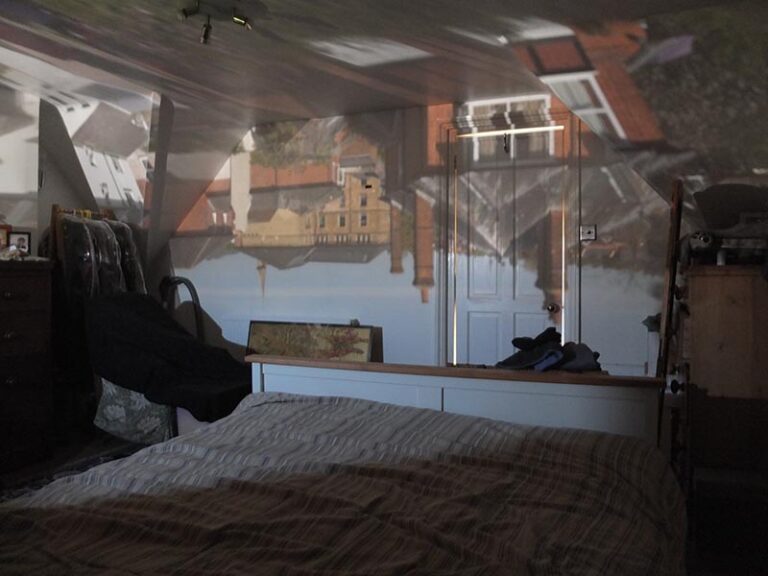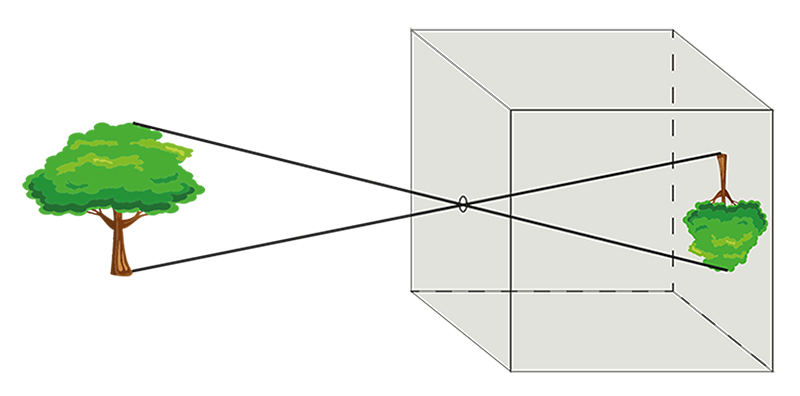It was not obvious even to great minds of antiquity that we see as result of light from the sun reflecting off the objects around us and entering our eye. It was thought e.g. by Euclid and Ptolemy that the eye saw objects by projecting light onto them.
The way we now understand sight was first described by the Arab scientist, Hasan Ibn al-Haytham, in c.1020 but emerged only slowly in Western Europe.
One way it did so was in attempts to explain the camera obscura effect; here an inverted image of a scene is projected onto a surface as a result of light from the scene passing through a small hole.

Camera obscura set up in the author’s bedroom (the photo was over exposed to brighten the image)
The effect can be understood by appreciating that light is reaching the surface by travelling in straight lines from every point on the scene. A small hole in a roof or wall may produce the effect in a dark room. However, if the hole is too small the image will be too dim, if it is too large the image will be blurred (as light from each point can illuminate a wider area of the ‘screen’).
The camera obscura effect is impressive (even today) and uncommon so early accounts provide an insight into the understanding of optics at that time. For example, while it was accurately described in China in c.400BCE and possibly not again until Ibn al-Haytham in c.1020, it remained unexplained in western Europe.
In ancient Greece they questioned why, during a partial solar eclipse, the ground under a leafy tree had crescent-shaped light patterns or why the small rectangular holes in a wicker screen produced round light images.

Illustration of camera obsura effect
In both cases, light is passing through small apertures and projecting an image of the sun. Much later accounts e.g. by Francis Bacon (1267) gave incorrect explanations of the effect but by the 1500’s it was understood in Europe; Leonardo da Vinci gave a detailed account in 1502 (albeit in mirror writing and unpublished) and small camera obscuras were being made later in the 1500s using a box and a tiny hole. These ‘pinhole cameras’ had a semi-transparent screen so that the projected image could be seen from the outside.
The mathematician, Gerolamo Cardona, is thought to have been the first to propose replacing the pinhole with a lens (c.1550). This enabled much greater light collection and so brighter images. They were used as a drawing aid; artists, such as Caravaggio and (very probably) Vermeer used it to trace the outline of the composition and to ensure accurate proportion and perspective. This device is of course the forerunner of the modern camera.
Author: Dick Fielding


